2 Professional Knowledge and Teaching Practice
Planning
Here is an example of integrated Math and Art unit plan that I created for my Block C SK/1 classroom. I knew that in my culminating task, I wanted students to use clay to create a piece where they would present to me different shapes in the creation and be able to answer questions about these shapes. I built my lessons knowing what the culminating task was. For example, as an introduction to 3D shapes I had students build a “kitten castle” that used 3D shapes. I also had students build shapes from marshmallows and toothpicks. These activities would give students practice with constructing or molding shapes before the culminating activity.
Assessment (as, for)
Here are examples of how I used assessment as learning in the unit attached in the above section. The first page of this document is a photo of a bulletin board that I made with the help of students. It has anchor charts that we created together and our learning goals. It also includes photos of students’ creations of 3D shapes and quotes of them telling me what 3D shapes they made. This bulletin board was made for students to refer to throughout the unit and use it to self-correct their own work. The next photo on the document is me sharing student work with the class. Students independently created a sorting rule for 2D and 3D shapes. Then, they drew shapes that fit the rule and shapes that did not fit their rule. I presented the rules to the class, the class used whiteboards to draw a shape that fit the rule, and then I showed them what their peers drew. The last photo on the document is a sorting activity that students completed by working in groups and getting help from their peers.
Here are examples of how I used assessment for throughout various subjects in my Block C SK/1 practicum. The first example shows the diagnostic assessment I did on my students’ knowledge of 3D shapes before beginning the unit. On the second page, it illustrates an example of how I assessed learning from the kindergarteners and not the Grade 1s. I used more anecdotal notes after taking photos of observations I made of what students did that I thought illustrated at least one of the four quadrants. On page 3 ands 4 of the document, examples are shown of how I monitored student progress throughout the 3D shapes unit. On the last page, it shows how I would focus on assessing one student at a time in Gym. I would attempt to find observations, conversations, strengths, and next steps for two students each Gym class. The feedback I found when assessing these students was often told to them verbally or through pictures since my students were younger and many could not yet read sentences.
Evaluation
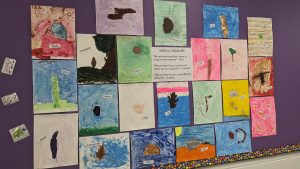
To illustrate an example of how I evaluate my students, I will use an example from my Block B practicum in my Grade 2 classroom. I was teaching a visual arts unit that focused on the element of texture. In the first lesson, we defined what texture is in visual art, created learning goals, and success criteria. Students completed two activities before being evaluated. The first activity involved students doing “impasto” paintings where I mixed up glue and toilet paper in containers for each student. Students chose a piece of nature that I had collected and drew the outline of it on paper. Then, students painted the glue/toilet paper mixture over-top of their piece of nature. Finally, students painted the piece when their mixture dried. The second activity involved stencils and tin foil. Students used sentcils and placed them underneath tinfoil. When the tinfoil was rubbed gently underneath, the texture of the stencils showed up on the tinfoil. Lastly, students used sharpies to colour in their designs. All of these components of the unit were posted on a bulletin board for students outside the classroom (shown above.)
The students and I created the success criteria for the culminating task together after I gave them the instructions. In the culminating task, students used clay to created their handprints. On their handprints, students created texture. After the clay dried, students painted their hands. Here is my evaluation of each student’s creation. I marked each student on three different points on the success criteria. The feedback in my notes was shared with each student. Below, are some examples of this culminating task.
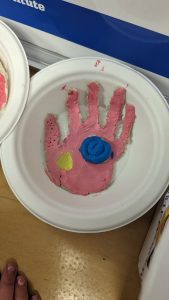
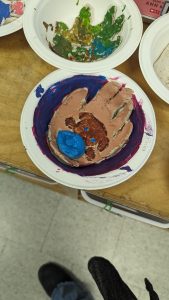
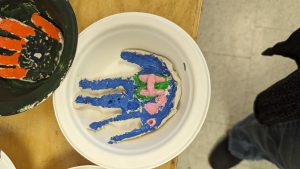
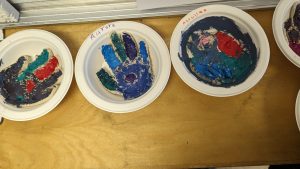
Media Attributions
- PXL_20240418_164915687.MP
- PXL_20240424_180348604.MP
- PXL_20240424_181625418.MP
- PXL_20240424_181628265.MP
- PXL_20240424_181632893.MP
